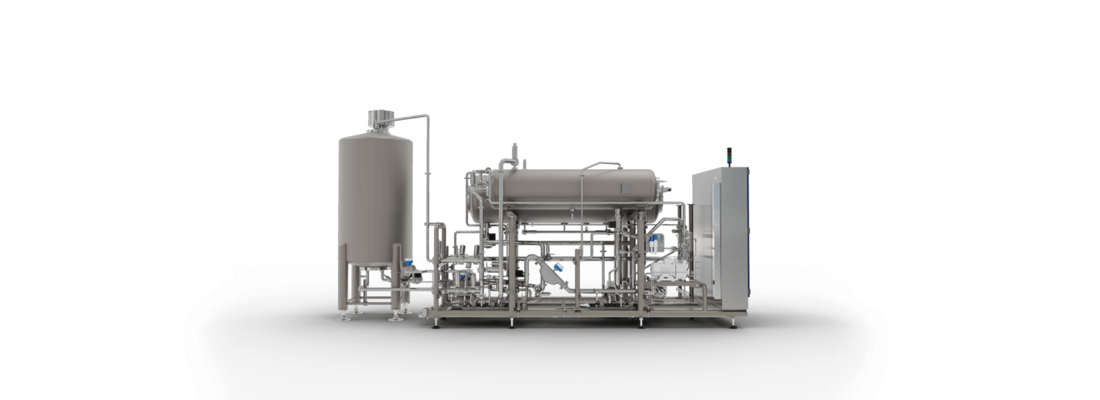The Contiflow is a true allrounder, suitable for mixing and carbonating all varieties of beverages. In order to harmonise proven line engineering with beverage makers’ sustainability strategies, Krones offers optional features for the Contiflow that achieve savings in many areas.
Integrated syrup supply tank
At the BrauBeviale, Krones presents a line concept that includes an integrated syrup supply tank. This variant is especially beneficial when the line and the syrup room are not located directly next to each other. That’s because long supply pipes result in long mixing phases – and if flushing the pipes requires a stop-and-go operation of the filling line then that in turn increases product losses. The integrated supply tank makes it possible to empty any mixing phases that would otherwise have to be drained away directly into the tank. Brix-value-controlled admission of the syrup on the Contiflow can even out any resulting fluctuations in the Brix value, depending on the product and mixing ratio involved.
This not only minimises product losses but also shortens change-over times. A high-end solution with two supply tanks is also available, which further substantially speeds change-overs. That is because the syrup feed pipes also have to be drained and flushed at every product change. And depending on the length of the pipes, that process can take more time than the flushing programmes of the Contiflow and Modulfill.
With the two-tank concept, the second tank is already filled and immediately ready for production when it comes time for a product change-over. The first tank can then be cleaned and made ready for the next production batch without additional line downtime.






